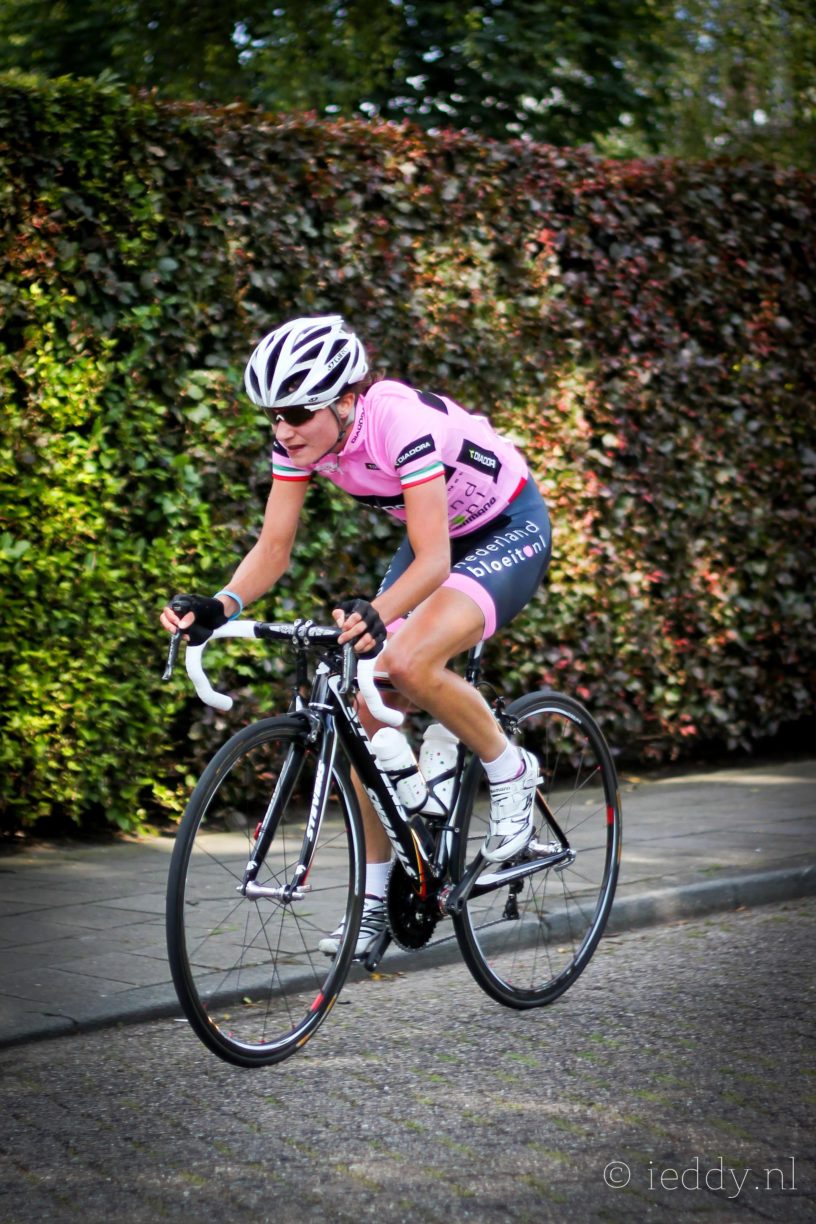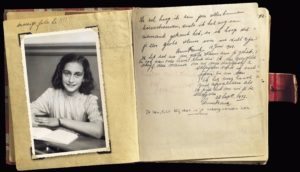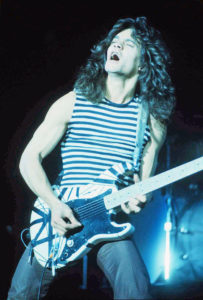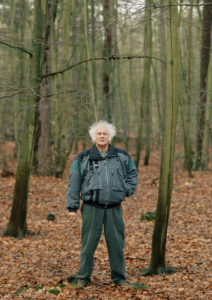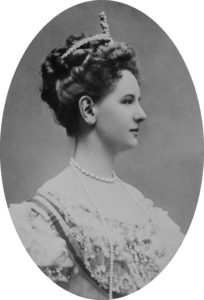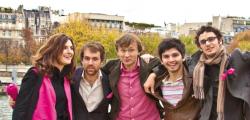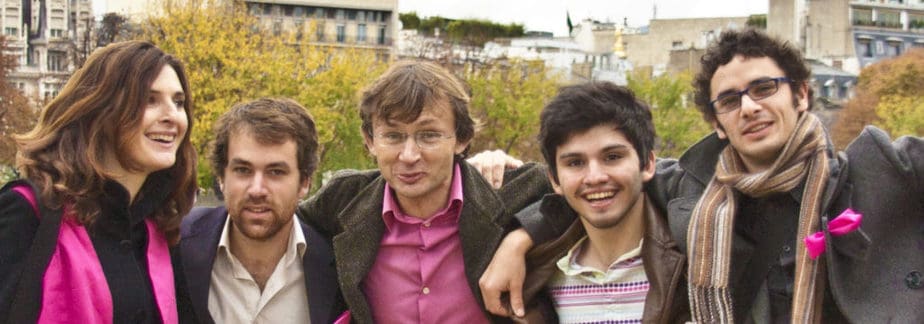Top 20 Famous Dutch People
*Originally published by Christine M in November 2015 Updated by Vanessa R in October 2022 and Updated by Vanessa R in September 2023 and Updated by Diana K in February 2024
The Dutch are known as one of the happiest people on earth and are said to be the bluntest or most direct people you will ever meet! Its famous people comprise talented football players, athletes, politicians, artists, and writers among others. A look at the top 20 famous Dutch people will perhaps reveal the Dutch character and inherent capabilities.
1. Vincent van Gogh
Vincent van Gogh is one of the most famous painters of the 20th century. He is world-renowned and a household name celebrated for paving the way for many other painters that came after him.
His paintings are still on display with some such as The Starry Night replicated for various uses. His use of color and vivid descriptions in his landscape paintings and portraits made his work memorable.
Van Gogh had his share of difficulties as an artist and as a human being. He supposedly struggled with manic depression that led to him taking his own life. His paintings are on display in museums throughout the world, ensuring that his name is part of conversations in art and even in living rooms.
2. Ruud Lubbers
The Dutch economy experienced a great recession in the 1980s- Rudd Lubbers is the man credited with spearheading the rebuilding of the economy at this time in Dutch History. Part of this involved reforming social security, thus reducing the deficit. His impressive legacy also involved his humanitarian work that addressed various causes, as well as working with the United Nations and European Union.
Lubbers’s service as Dutch Prime Minister from 1982 to 1994 rendered him the longest-serving Prime Minister in Dutch history. Besides being a great economist which he demonstrated very well, Lubbers was a great team leader with superior problem-solving skills.
3. Rudd Gullit
Rudd Gullit was once captain of the Netherlands national team at the UEFA Euro in 1988, where his team won the tournament. He made it on FIFA’s 2004 list of Top 125 Greatest Living Footballers and was named the World Soccer Player of the Year in 1987 and 1989. His career run had him play for other teams besides Netherlands such as Chelsea, Milan, and HFC Haarlem.
His trademark dreadlocked hair and mustache made him recognizable on and off the field. Gullit has since retired from playing the sport.
4. Robin van Persie
Until 2019, Robin van Persie was a career football player attached for the longest time to Manchester United. He has also played for Arsenal, the Netherlands men’s national team, and Turkish club Fenerbahce. Van Persie has also assisted in the management of Feyenoord Rotterdam, a Dutch Professional football club.
Van Persie is regarded as one of the best strikers of his generation. He is the Netherlands’ all-time top scorer for at least 50 goals for the team and has represented his country in FIFA World Cups and UEFA European Championships.
5. Marianne Vos
One of the Netherlands’ most recognizable athletes is Marianne Vos, a cyclist that is considered one of the finest in her generation. She is a mountain-bike racer, track racer, and road- bicycle racer that has won many Olympic medals and world championships. She was introduced to cycling early on by watching races together with her brother, here’s where her career was birthed.
Marianne made a conscious decision to become a professional racer after it became evident to her and to others that she was talented. It is refreshing to have a woman professional cyclist in a country most famous for its talented football players.
6. Anne Frank
Anne Frank’s diary is world-famous as it chronicles her and her family’s life in hiding during the Nazi Germany invasion of the Netherlands- Anne Frank and her family is one of the most famous victims of the holocaust. The Nazi rules, restrictions, and segregation towards the Jews meant that Anne Frank would not have a normal childhood.
Like many Jewish families, Anne Frank and hers had to go into hiding from the Nazis. It is here that she documented the things that took place at the ‘Secret Annex’; her inmost thoughts and feelings as well as some shorts stories and excerpts from books she read. Her book was published after her death and is available to date in various languages. It was also adapted for the stage and screen.
The Anne Frank House stands to date as a museum which raises awareness of the Anne Frank story and all it involves. It was put together in collaboration with Anne Frank’s father. It is the actual house that Anne Frank’s family went into hiding in.
7. Mata Hari
Mata Hari’s life is a peculiar one that sparks mystery and interest. She was a professional dancer, mistress, also a spy for France during World War 1. The latter ‘occupation’ is what cost her life via execution when she was suspected of double agency.
Mata Hari did not shy off using her feminine wiles to forge ahead- for starters, she responded to a newspaper advertisement that sought a bride for a military captain based in the Dutch East Indies. The significant age gap notwithstanding, Mata Hari became his wife and later an exotic dance performer.
She retired from dancing when she neared 40 and settled into a second marriage- she was determined to become a good breadwinner when her captain husband got injured in war. She became a French Spy expected to get German secrets. It is here that she was set up to look like a double agent leading to her sentencing and execution.
Mata Hari’s story has been adapted to movies and TV shows.
8. Eddie Van Halen
Eddie Van Halen was a Dutch guitarist likened to a modern-day Mozart; a guitar god. He was inducted to the Rock and Roll Hall of Fame in 2007, and is also known for his iconic solo on Michael Jackson’s 1983 hit ‘Beat It’. Van Halen was a cofounder of his rock band Van Halen which was best known for their hit song ‘Jump’.
Van Halen added pizzazz to the unique style of playing dubbed the ‘two-handed tap’. He refined it and made it very popular. He played his guitar at a lighting fast speed inspiring many rock guitarists in the 80s.
9. Jan Wolkers
Jan Wolkers is considered one of the “Great Four” writers of post-World War II Dutch literature. He was an author, sculptor, and painter. In his repertoire as a writer are short stories, novels, and plays. Wolkers declined several awards for his work such as the Costantinjn Huygensprijs and the P.C Hooftprijs in 1982 and 1989 respectively.
As a sculptor, Wolkers initially worked with large amounts of glass that were easily vandalized. He later incorporated steel into some of his works.
At least six films have been based on Wolkers’ work, some of which have earned nominations and awards.
10. Wilhelmina of the Netherlands
To cap the list of the top 10 famous Dutch people is a look back at history to Wilhelmina of the Netherlands. Her nearly 58-year reign rendered her the longest-serving monarch in Dutch history. She had to contend with the 1933 Dutch economic crisis and rule through the First World War in which she was able to maintain the Netherlands’ neutrality and the Second World War.
Wilhelmina of the Netherlands ascended to the throne at age 10! She ruled via regent, her mother. She is acclaimed for her long rule, the Dutch economic recovery during her reign as well as ensuring that her family was one of the royal houses that remained in existence. She also made personal investments thus growing her own family wealth.
Wilhelmina abdicated the throne in favor of her daughter Juliana and settled at her palace in Het Loo where she died.
11. Queen Maxima
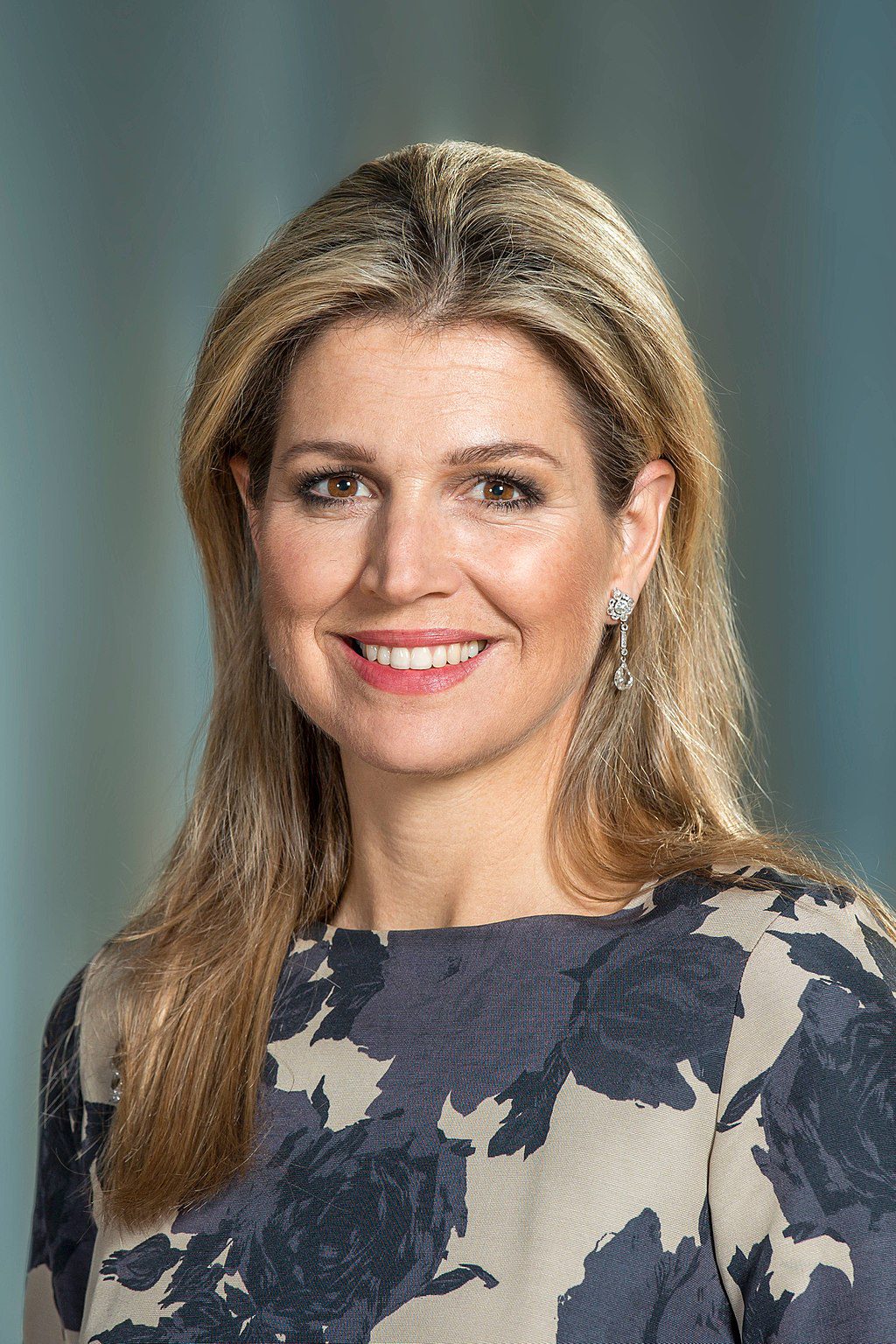
maxima by RVD, Jeroen van der Meyde from wikimedia commons
On May 17, 1971, the Argentinean city of Buenos Aires welcomed the birth of Queen Maxima. After completing her studies in economics, she moved to New York and began working for some of the major commercial institutions.
She met Crown Prince Willem-Alexander in Seville in April 1999 while there on business. A friendship between the two developed as a result, and on April 30, 2001, they announced their engagement.
Additionally, Maxima acquired Dutch citizenship in May 2001, making her a member of the royal family upon marriage. Maxima received the title of Princess after the couple’s marriage on February 2, 2002. The title of Queen was bestowed upon Princess Maxima when her husband Willem-Alexander was crowned King of the Netherlands in 2013.
12. Rutger Hauer
The First Dutch actor to succeed in establishing himself in Hollywood was Rutger Hauer. He made a name for himself in 1981 thanks to his part in the Sylvester Stallone-starrer Nighthawks.
Rutger Hauer was consequently able to land more important roles in movies like Blade Runner, Buffy the Vampire Slayer, Batman Begins, and Sin City. Due to his performance in Escape from Sobibor, Rutger Hauer 1988 became the first Dutchman to ever receive a Golden Globe. He is now among the most well-known and prosperous actors in the Netherlands as a result of everything.
13. Jeroen Krabbé
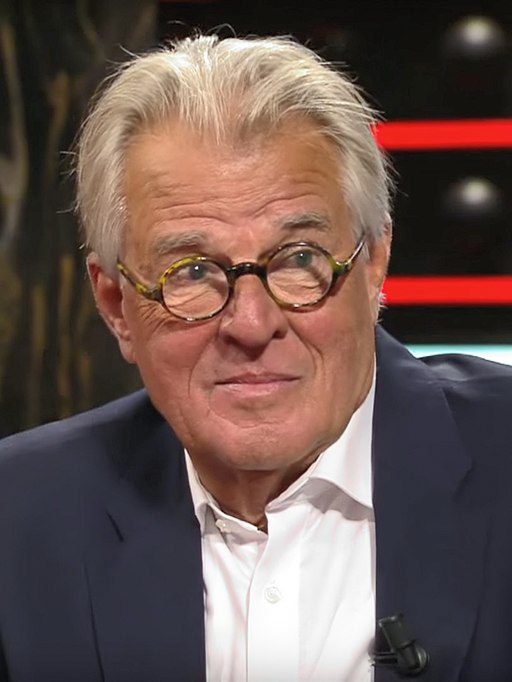
Jeroen Krabbé by DWDD from Wikimedia Commons
Similar to Rutger Hauer, Jeroen Krabbé made his Hollywood breakthrough in the 1980s. With his part in the 1986 movie Jumpin’ Jack Flash, he accomplished this. A prosperous Hollywood career was only getting started.
His first leading part came in the 1987 James Bond movie The Living Daylights when he played the villain. The Fugitive, Prince of Tides, Ocean’s Twelve, and Transporter 3 were the next notable movies in which he played additional roles. In addition, Jeroen Krabbé appeared in a lot of Dutch movies and television shows.
Jeroen Krabbé is among the most well-known Dutch actors in history due to his parts in well-known Hollywood productions.
14. Famke Janssen

Famke Janssen by Gage Skidmore from Wikimedia Commons
One of the most well-known Dutch actresses of the modern era, if not the most, is Famke Janssen. She has had outstanding performances in blockbuster movies including the Taken series, The Wolverine, James Bond’s GoldenEye, and the X-Men series.
She is without a doubt one of the most well-known Dutch performers of all time because she has made a name for herself in Hollywood. Who knows what huge movie we’ll see her in next since she hasn’t quit performing yet!
15. Rembrandt van Rijn
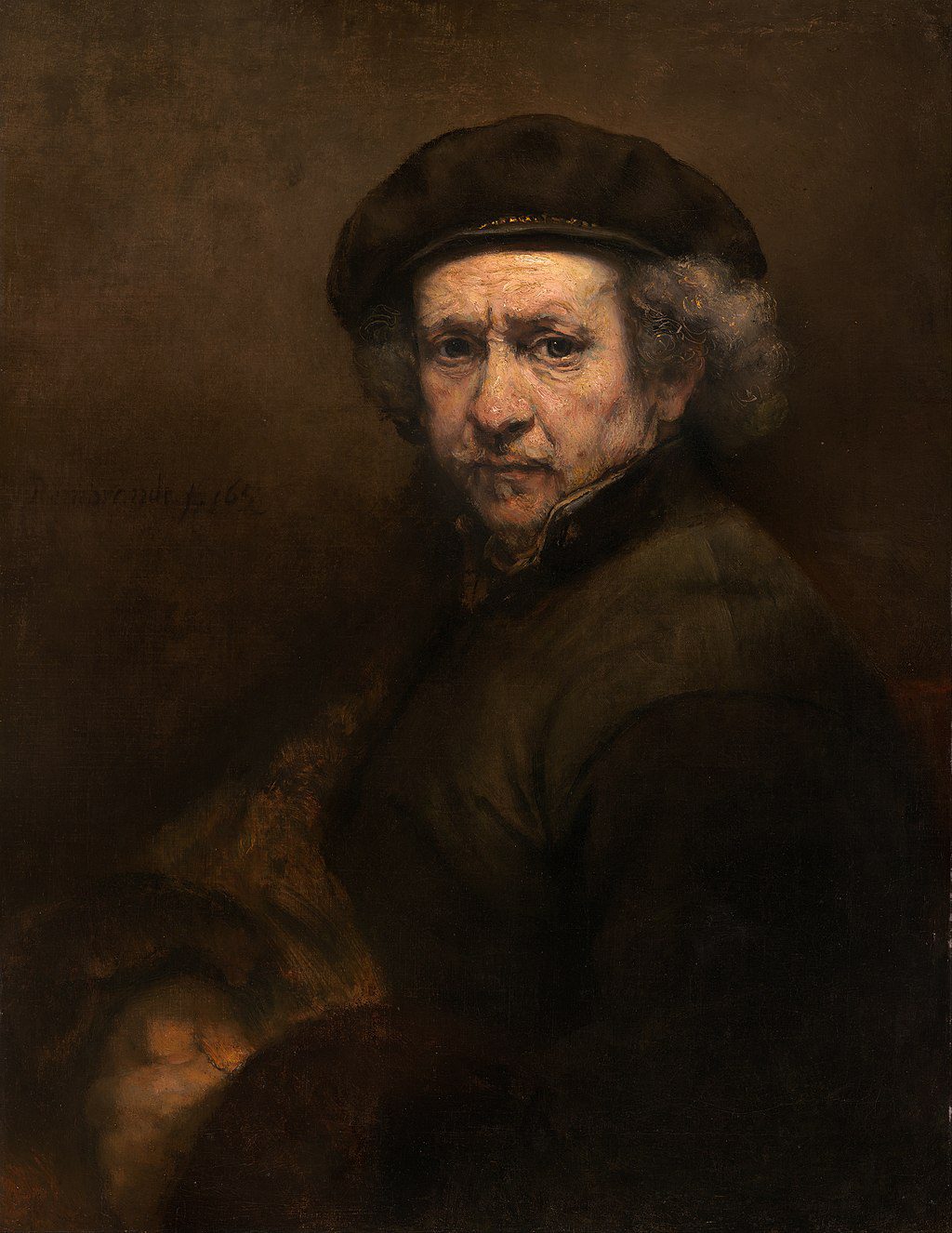
Rembrandt van Rijn by National Gallery of Art from Wikimedia Commons
Naturally, Rembrandt van Rijn is a further painter who instantly springs to mind when considering the best Dutch art. His paintings are well-known all throughout the world, and he is regarded as one of history’s greatest painters.
16. George Blake
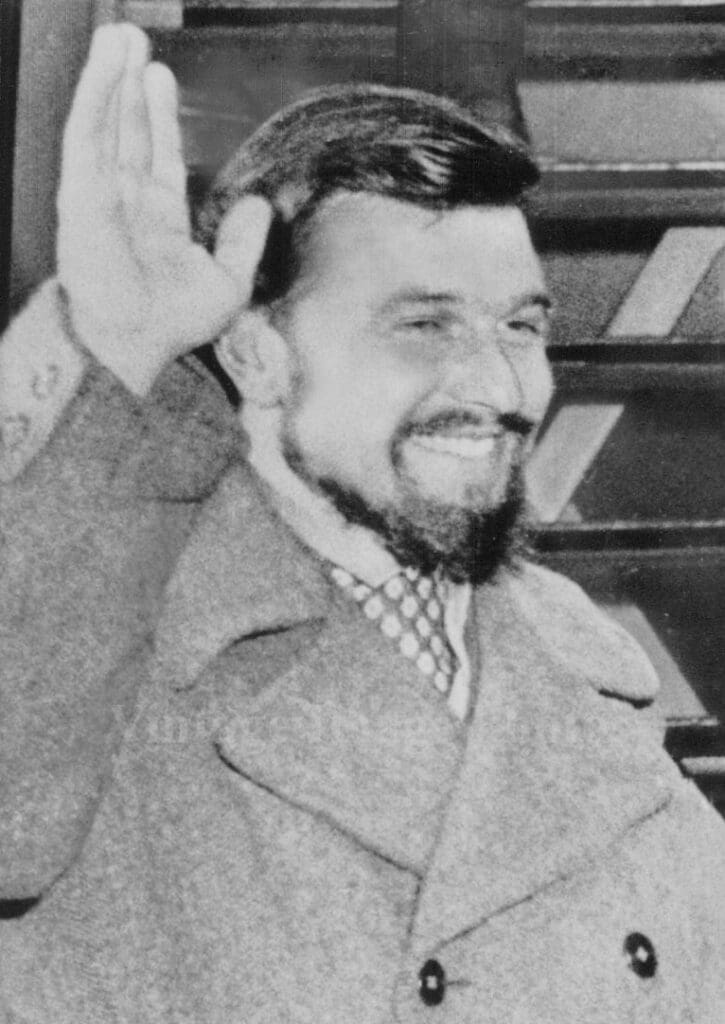
Unknown (Associated Press), Public domain, via Wikimedia Commons
George Blake, the best-known Dutch spy in history, joined MI6 after serving in WWII resistance and taking various detours.
After becoming fluent in Russian, he was eventually deployed to North Korea to learn more about the presence of Soviet troops there. George Blake was detained and taken to a camp when North Korea went to war. Nobody knows what transpired in this location, although it was later discovered that he had turned communist there.
17. Michiel de Ruyter
You might have heard of Michiel de Ruyter, the famous Dutch sea admiral who was quite the force to be reckoned with. He won many wars before meeting his end from a cannonball to the head. He was born in Vlissingen in 1607 and began his career as a merchant sailor. Later on, he joined the Dutch Navy in 1631 and became one of the most celebrated admirals in Dutch history.
De Ruyter quickly rose through the ranks and gained fame for his bold exploits and shrewd tactics. He played a crucial role in various naval battles, such as the Battle of Scheveningen in 1653, in which he guided the Dutch fleet to triumph over the English.
17. King Willem-Alexander

Koos Breukel, CC0, via Wikimedia Commons
King Willem-Alexander is the present monarch of the Netherlands. He ascended the throne on April 30, 2013, following the abdication of his mother, Queen Beatrix. Born on April 27, 1967, in Utrecht, Netherlands, he is the eldest son of Prince Claus and Beatrix.
King Willem-Alexander had a successful career as a pilot in the Royal Netherlands Air Force and also served as a member of the International Olympic Committee before becoming the ruler. He is well known for his passion for sports and is an avid advocate of sustainable practices and effective water management.
18. Michiel Huisman
Michiel Huisman is a Dutch actor and musician who has achieved success in both film and television. He started his acting career in the late 1990s and was born on July 18, 1981, in Amstelveen, Netherlands. With his appearances in popular TV shows like Game of Thrones, Nashville, and The Haunting of Hill House, Huisman is quite famous. He has also starred in movies such as The Age of Adaline and World War Z.
19. Carice van Houten

Sachyn, CC BY-SA 3.0, via Wikimedia Commons
Dutch actress and singer Carice van Houten is well-known both in her native country and internationally. She began her acting career in the late 1990s. She was born in Leiderdorp, the Netherlands, on September 5, 1976.
In the well-liked television series Game of Thrones, Van Houten is most recognised for her portrayal of Melisandre. She has also acted in films including Repo Men, Valkyrie, and Black Book. Van Houten is not just a skilled actor but is also a gifted vocalist who has put out a number of CDs on her own. She is well renowned for her distinctive sound and passionate voice.
20. Piet Mondriaan
Piet Mondrian, a Dutch painter and one of the fathers of abstract art, started his career in the late 19th century after being born on March 7, 1872, in Amersfoort, Netherlands.
Mondriaan is well known for his use of geometric shapes and primary colours, and his artwork is defined by a sense of harmony and balance. His paintings are commonly considered a representation of his philosophic and spiritual beliefs because of his view that art should reflect the spiritual and the universal.
Top 20 Fascinating Facts about Dutch People
1. The Land of Giants: Dutch People are Europe’s Tallest
Statistically, the Dutch are among the tallest people in Europe. With an average male height of 184 cm (6 feet) and female height of 170 cm (5 feet 7 inches), their towering height is a remarkable trait. Experts attribute the Dutch growth spurt over the last century to better nutrition, health care, and living standards. Today, Dutch people stand head and shoulders above most other nationalities. The difference is especially noticeable in older generations, as the Dutch physical stature has steadily increased over the 20th century.
Scholars point to protein-rich diets in childhood and adolescence allowing the Dutch to fully realize their genetic potential. The abundance of dairy products like milk and cheese in the typical diet provides the necessary building blocks. The Dutch government has also prioritized access to affordable nutrition and medical facilities.
2. Cycling is Integral to Dutch Identity
There are more bicycles in the Netherlands than people. With over 18* million bikes for a population of 17 million, cycling is an integral part of Dutch culture and daily life. The Netherlands boasts an extensive cycling network spanning over 35,000 km, with dedicated bike lanes, traffic lights, and bike parking facilities. Over a quarter of all trips made by Dutch people are by bicycle. Cities are designed to be bike-friendly with special bridges, tunnels, and intersections for cyclists.
The Dutch cycle an impressive 2.5 km per day on average. Even the elderly can be seen riding bikes well into their golden years. Cycling is encouraged from a young age, with children cycling safely to school from as early as primary school. Workplaces, shops, and recreational facilities all cater to cyclists’ needs. The flat terrain and mild climate also favour cycling across the low-lying lands.
3. The Dutch Proficiency in English is World-Leading
The Netherlands boasts the highest English proficiency in the world, with over 90% of the population able to converse in English. Fluency in English is widespread among Dutch people, especially the youth. Proficiency in languages is given high priority in Dutch education. Combined with high exposure to English-language media content and entertainment, the Dutch have cultivated exceptional English skills. English lessons start as early as primary school for Dutch students.
Speaking English is essential for Dutch businesses and multinational corporations based in the Netherlands. The Dutch score highly on major English proficiency exams like TOEFL and IELTS. Even university courses are frequently taught in English to attract international students and prepare graduates for global careers. Many Dutch speak not just fluent English but also German or French as second languages.
4. A Melting Pot Society Because of the Dutch are Welcoming tor Immigrants

Rob Bogaerts / Anefo, CC0, via Wikimedia Commons
Approximately one-fifth of the population in the Netherlands is foreign-born, contributing to its multicultural and cosmopolitan atmosphere. With significant immigrant communities from Indonesia, Turkey, Morocco, Suriname, and the former Netherlands Antilles, Dutch society has undergone rapid cultural diversification since the 1970s. The diverse populace is reflected in a rich tapestry of customs, cuisine, festivals, and religious beliefs. Inter-cultural marriages and multi-ethnic families are also increasingly common.
The Dutch are generally tolerant toward cultural differences, with social integration policies welcomed by both locals and immigrants. Dutch cities have vibrant Chinatowns, Little Italys, and Middle Eastern neighborhoods testifying to the niche migrant communities. Still, immigration and cultural assimilation remain hot political issues as traditional Dutch identity adapts to meet changing times.
5. Icons of Dutch History: Extensive Windmills Draw Tourists

Image by Helena Jankovičová Kováčová from Pixabay
The Netherlands is home to over 1,000 windmills, which have played a significant role in Dutch history and landscape. Windmills were crucial in draining lands, sawing timber, and processing foods like wheat, mustard, oils, and dyes for centuries. While once numbered around 10,000, many still remain, drawing tourists with their picturesque scenery. Dutch windmills are an iconic national symbol and testify to the country’s ingenuity in harnessing wind power.
The windmills are preserved well as cultural heritage sites that provide an awe-inspiring glimpse into traditional Dutch technology and architecture. Their giant wooden sails, brickwork towers, and picturesque canals evoke images of the quintessential Holland for visitors. Many windmills now house museums, shops, or restaurants. Holland continues to pioneer wind energy today as one of the world leaders in wind turbine usage and renewable power.
6. Part-Time is Prime Time: Netherlands Leads in Part-Time Work
The Netherlands has the highest number of part-time workers in the European Union—four out of ten employees work part-time. This allows for a healthy work-life balance. The Dutch prioritize family time and personal development outside of work. Both men and women commonly work reduced hours after having children to enable parenting.
The concept of the “pappa day” involves fathers accessing subsidized parental leave benefits. High productivity and prosperous economic conditions allow the viability of large-scale part-time employment. The flexible labour laws also facilitate customizable working arrangements. The Dutch model of balancing career and lifestyle via part-time work has drawn interest from countries worldwide.
7. The Dutch Love their Royal Family

RoyalblogNL, CC BY 3.0, via Wikimedia Commons
The Dutch royal family, known as the House of Orange-Nassau, has a rich history spanning back to the 16th century and remains beloved by the Dutch people. On April 27th “King’s Day”, the Dutch celebrate King Willem-Alexander’s birthday with vibrant street parties, wearing orange attire, holding festivals and flea markets all over the country.
Even during dire times, the royal family provided stability and unity to the Netherlands through wars, occupations and disasters. During WWII when the country was occupied, the royals fled to London to set up resistance efforts abroad. Queen Maxima, originally from Argentina, is admired for her fashion sense, compassion and work ethic. The family is seen to represent Dutch culture.
8. Gin’s Dutch Origins: Spirit Invented in the Netherlands

Museum Rotterdam, CC BY-SA 3.0, via Wikimedia Commons
The Dutch are credited with inventing gin in the 17th century, which is today a popular spirit worldwide found in many cocktails and tonics. Cheers to their creative contributions to libations that are now produced globally by iconic gin brands. What began as jenever, a juniper-flavored alcoholic drink pioneered by Dutch chemist Franciscus Sylvius in his search for medical cures, evolved into a recreational spirit.
Soldiers drank it for liquid courage, merchants for festivities. The British eventually produced dry gin which became fashionable in their upper-class circles as well. Gin‘s origins can be traced back to the traditional Dutch pursuit of technological innovation paired with medical science advancements.
9. Birthplace of Modern Economics: Pioneered Democracy & Capitalism
The Netherlands played a pivotal role in pioneering democratic principles and capitalist systems in the modern world. The Dutch philosopher Erasmus in the 16th century intellectually influenced liberal economics and politics in Europe. His Essay on Free Will laid grounds for citizens’ rights.
Going further back, the county councils of Friesland in the 13th century implemented early forms of democratic governance. Subsequently the Dutch Republic was a quasi-federation of provinces with elected leaders and enterprise. This history has led some experts to argue that modern Western economic attitudes took shape in the Netherlands.
10. The Dutch are Big Exporters of Clogs Shoes, Beer & Flowers
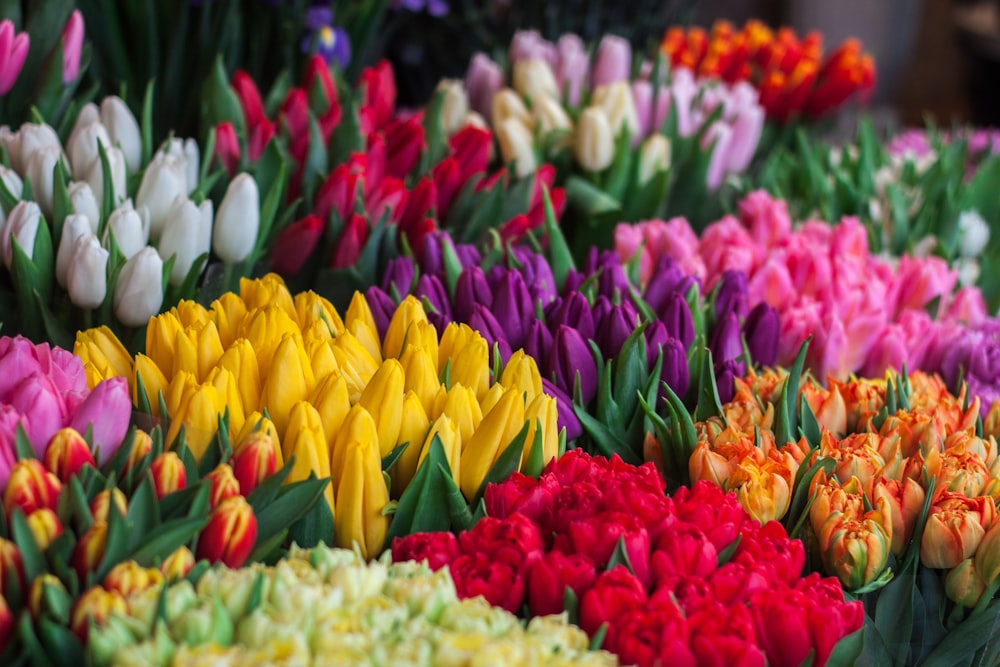
Photo by Ioann-Mark Kuznietsov on Unsplash
While clogs (wooden shoes) are iconic, the Dutch are also the biggest beer exporters and have a vibrant tulip culture represented worldwide. The Netherlands is renowned for such trademarks like Heineken beer, acres of colorful spring blooms, and the kinderklompen miniature clogs sold as souvenirs. Dutch business ventures distribute these flagship exports globally.
For instance, Holland sends over a 100 million tulip bulbs to North America annually. Clogs originated as sturdy farmer footwear but evolved into cultural crafts. Delftware pottery and Gouda cheese are also archetypically Dutch. More than stereotypes, these items testify to the Netherland’s advanced agricultural systems and trade influences through history.
11. Cheese Masters: Renowned for Dairy Delights

Kgbo, CC BY-SA 4.0, via Wikimedia Commons
The Dutch are renowned for their cheese-making prowess, producing over 60 types of cheese. Gouda, Edam, and Leyden cheeses are staples found across Dutch towns, and cheese markets like the one in Alkmaar are a must-visit for visitors. Dutch cheese production dates back centuries, enabled by rich soil and grasslands ideal for dairy farming.
Today the Netherlands is one of the world’s largest cheese exporters. Beyond commercial distribution, cheese-making holds cultural significance, with traditional recipes passed down generations. The Dutch consume almost 50 pounds of cheese per capita annually. Cheese even features in beloved childhood fairytales and expressions. The iconic wooden clogs are designed with a halfway hollowed-out interior to secretly stash cheese!
12. The Dutch Employ Ingenious Solutions in “Building their Nation”
The Netherlands is famously flat, with over 50% of its landmass actually below sea level. Their intricate and expansive system of dikes, canals, and windmills keeps the vulnerable low-lying lands habitable and dry via fen and polder reclamation. This man-made geography defying nature is a feat of Dutch perseverance, borne of necessity.
Over many centuries battling the surrounding waters, the water management tradition became quintessentially embedded into Dutch identity, expertise being their lifeblood. But having exploited every precious inch of restricted land for agriculture and housing, the Dutch now turn to ultra-modern floating architecture and ocean-based farming solutions to accommodate a growing population on finite acres.
13. The Dutch stance Toward Cannabis is Linient
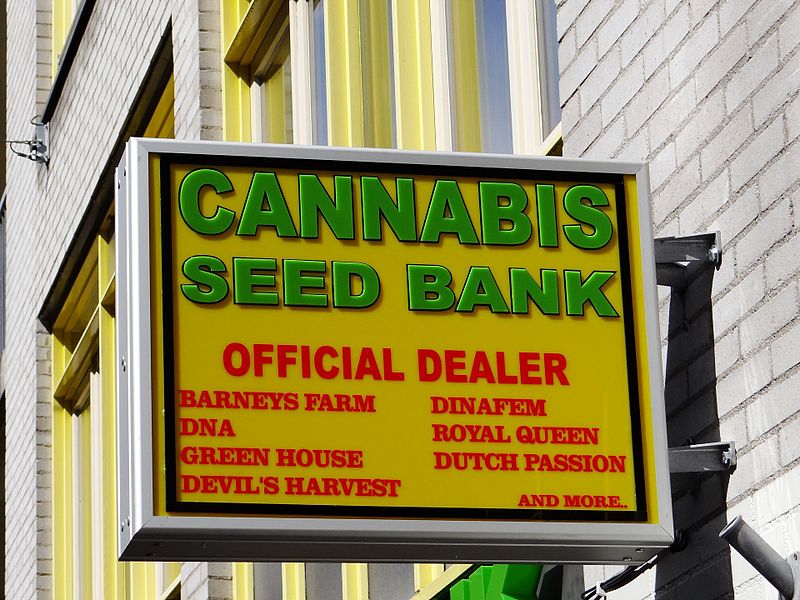
Anne Jea., CC BY-SA 4.0, via Wikimedia Commons
While usage is not fully legalized, personal possession of 5 grams or less is decriminalized as a civil offense. This enables Amsterdam’s famed “coffee shops” to openly sell cannabis without criminal penalties. An estimated 140* coffee shops operate legally via loopholes in the capital. However, cultivation and wholesale remain strictly prohibited so cafes rely on black market channels, perpetuating illegal elements in practice.
Still authorities adopt a tolerant approach viewing cannabis as a health and education issue, not requiring harsh convictions. they acknowledge societal realities of 23% Dutch people occasionally consuming it, instead emphasizing harm reduction. The “tolerance policy” also intends to separate markets for soft and hard drugs. But it often confounds visiting tourists who misunderstand and assume full legality.
14. The Dutch are known for Pioneering Creativity and Innovation

Alexander Migl, CC BY-SA 4.0, via Wikimedia Commons
The Netherlands punches above its weight as a trailblazing incubator of experimental design across diverse fields – from avant-garde architecture like Rotterdam’s Cube Houses to radical fashion. What unites such creativity is distinctly Dutch design philosophies that emerged nearly a century ago. Concepts of functional minimalism coupled with artistic expressiveness seek to harmonize values like thrift and splendor.
These Dutch design tenets manifest everywhere today, in industrial graphics, everyday urban landscapes, high-concept paintings like De Stijl, and even common household goods. For instance, the prototypical Red Blue Chair by Gerrit Rietveld embodies quintessential Dutch modernism. Currently the Design Academy Eindhoven nurtures unconventional designers who lead what’s cutting-edge worldwide.
15. Stroopwafels: Gooey Dutch Comfort Food
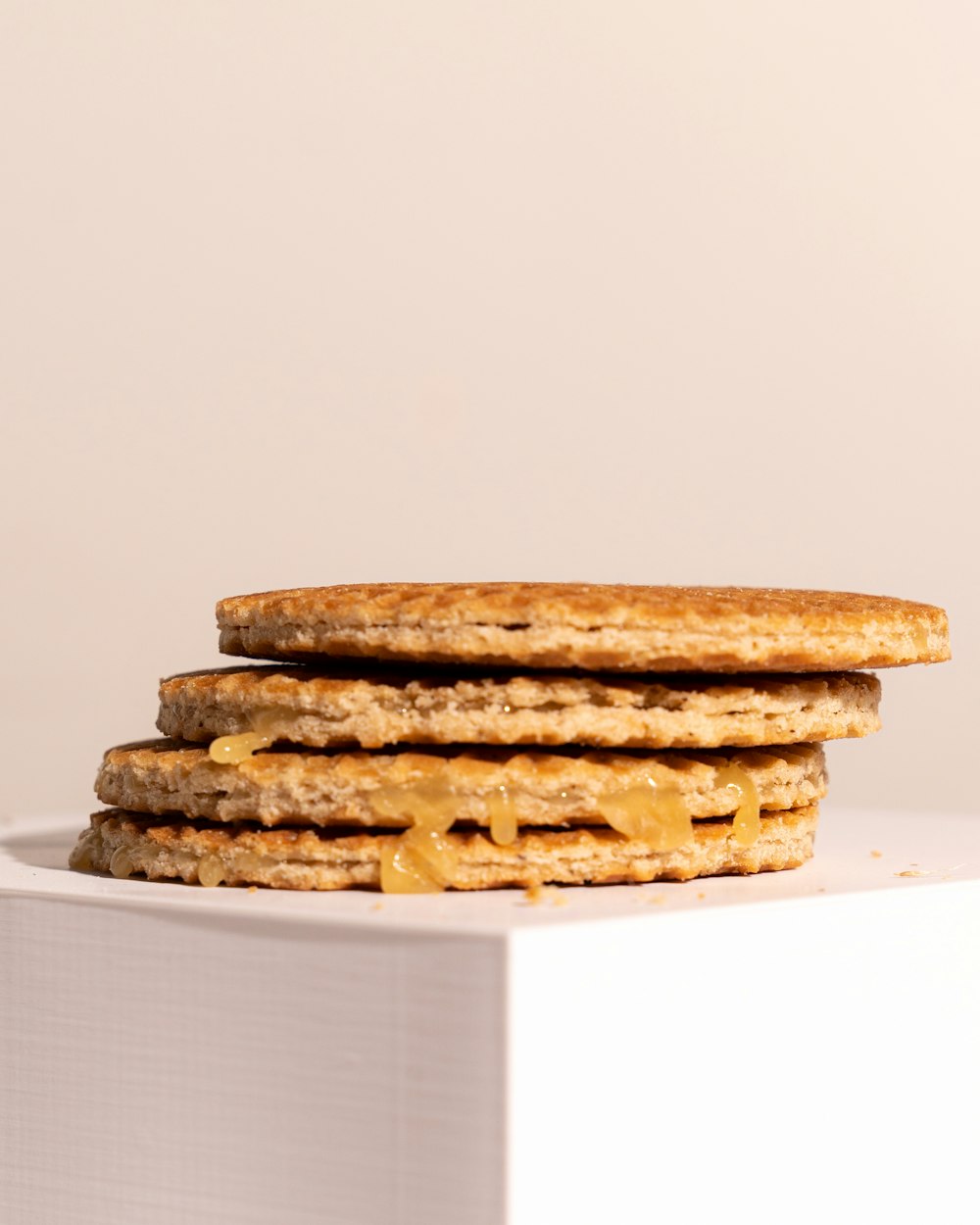
Photo by Vinicius “amnx” Amano on Unsplash
Stroopwafels are thin, caramel syrup-filled waffle cookies sandwiched together as a quintessential Dutch treat. Their doughnut-shaped sweetness originated in Gouda using bakers’ leftovers to create affordable snacks, which are best enjoyed alongside hot drinks. Stroopwafels exemplify Dutch confectionary traditions but also gezelligheid – the culture of coziness and companionship.
Their popularity spread rapidly beyond Holland, now ubiquitous in global cafés and supermarkets. Tasty when slightly melted, the crisp waffles reveal an oozy caramel center. An ideal match to coffee or tea, stroopwafels offer the right balance of comfort and decadence that completes moments spent with loved ones or even in quiet me-time.
16. The Dutch are True Marriage Equality Pioneers
The Netherlands holds a progressive stance on LGBTQ+ rights exemplified through policies. As early as the 19th century, Dutch society accepted homosexuality alongside heterosexual relationships. In 2001, The Netherlands cemented its trailblazing legislation becoming the first country worldwide legalizing same-sex marriage.
Such remarkable marriage equality came 20 years before other advanced nations like America caught up. This history reflects the Dutch culture valuing open-mindedness as intrinsic. With legal rights now equal and gay couples entitled to full marriage rights like any other citizens, the country focuses on tackling deeper social prejudices that persist.
17. Dutch Masters were Artistic Giants

Vincent van Gogh, Public domain, via Wikimedia Commons
The 17th century Golden Age of Dutch painting produced artistic luminaries like Rembrandt, Johannes Vermeer, and Frans Hals whose masterpieces now fetch millions. Despite the Netherlands’ small size, these Old Master painters tower like giants for their pioneering realistic styles, prolific output, and technical brilliance. Vivid color, dramatic contrasts, rich textures constitute their Baroque signatures.
Domestic interior scenes and portraits typify subject matter, captured with almost photographic detail – piercing eyes, skin folds, draped fabrics amazingly recreated on canvas. Dutch society’s upward mobility enabled such flourishing art markets and commissions. Merchant and guild patronage replaced aristocratic sponsors. The legacy of these Dutch Masters draws many to Dutch museums like the Rijksmuseum and Van Gogh Museum which house iconic world treasures.
18. The Dutch eat their Herring Raw
Eating raw herring, seasoned with pickles and onions, is a salty culinary tradition in the Netherlands usually enjoyed during festivals. Dutch fishermen historically relied on abundant North Sea herring supplies which moulded customs of preparing freshly caught fish. Unadulterated yogurt herring consumed straight from harbours persists today as street fare.
More commonly the fish gets preserved via pickling and curing methods allowing prolonged storage and widespread consumption inland. Herring vending stalls at funfairs satisfy drunken cravings late into the night. Alternatively formal four course herring lunches might celebrate early summer’s first catch. The Dutch export pickled herrings globally, but purists insist the fish tastes superior when freshly dressed on-site.
19. Sinterklaas: The Dutch Santa Claus Arrives Early

Michell Zappa], CC BY-SA 2.0, via Wikimedia Commons
The Dutch version of Santa Claus is Sinterklaas, a legendary saint donning robes and mitre who arrives by steamship every late November, welcomed by parades across cities. Accompanied by his mischievous helpers Zwarte Pieten, celebrations culminate on December 5th when Sinterklaas leaves gifts for children. But the traditional festive lore also stirs controversies surrounding cultural representation and race. Zwarte Pieten or “Black Petes” have afro wigs and painted faces, increasingly contested imagery.
Still Sinterklass brings yuletide excitement equivalent to Christmas itself. Families leave carrots and hay by chimneys for Sinterklaas’ horse. The next morning handmade sweets fill clogs or shoes gifted to well-behaved children. Naughty ones receive only potatoes or coal! Regardless of one’s views, Sinterklaas is an integral part of the Netherlands’ festive fabric.
20. Tolerance for Nudity: Saunas and Beaches Alike
The Dutch have a relaxed attitude toward non-sexual social nudity considered natural – whether in public saunas, designated nude beaches, or even mixed gender steam rooms. Such spaces allow family-friendly naturism and nudism without linkage to adult themes.Instead nudity is seen as a expression of the libertine spirit, associated more with innocence and purity. Resorts cater specifically to nude recreation as do zones demarcated within regular beaches.
Special dive platforms, campgrounds and parks exist across towns. While not yet mainstream, nudity tolerance grows as generations become more accepting. Younger Dutch especially admire Germany and France’s nude recreation patterns. Yet overt sexuality and gawking remain very much taboo. What defines acceptability is intent around nudity and mindset changes.
The diversity in these top 20 Dutch people goes on to show the country’s rich resources of its people and perhaps solidify the said inherent capabilities.
Planning a trip to Paris ? Get ready !
These are Amazon’s best-selling travel products that you may need for coming to Paris.
Bookstore
- The best travel book : Rick Steves – Paris 2023 – Learn more here
- Fodor’s Paris 2024 – Learn more here
Travel Gear
- Venture Pal Lightweight Backpack – Learn more here
- Samsonite Winfield 2 28″ Luggage – Learn more here
- Swig Savvy’s Stainless Steel Insulated Water Bottle – Learn more here
Check Amazon’s best-seller list for the most popular travel accessories. We sometimes read this list just to find out what new travel products people are buying.

